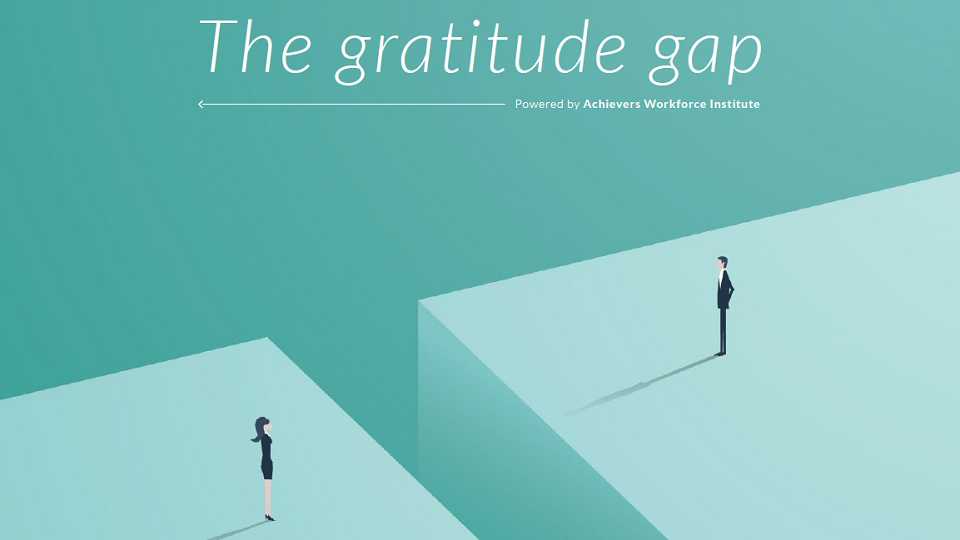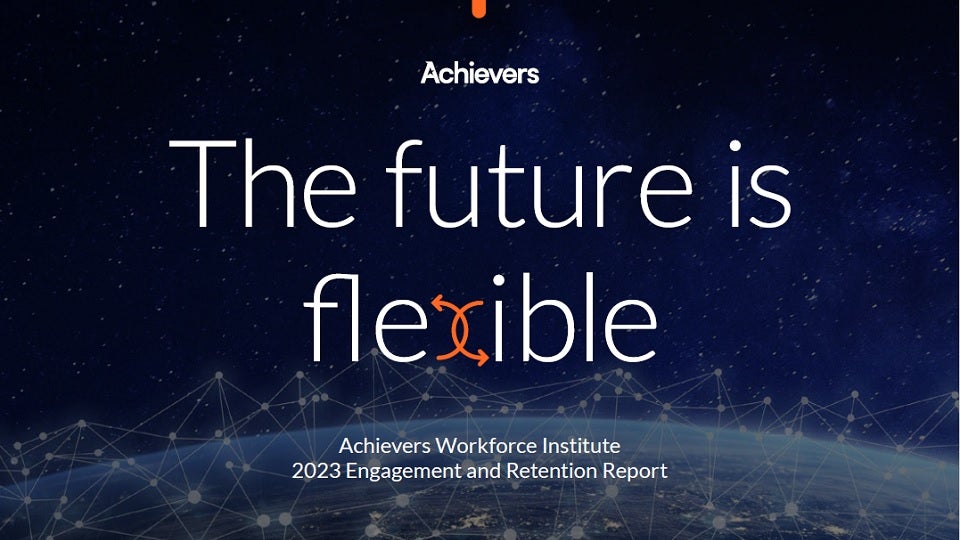Create a culture that means business™
Email address
A compelling employee experience is one of the best ways to engage and retain employees at your organization. But a great employee experience looks far different now than it did even just a few years ago. With new technologies enabling remote and hybrid work arrangements across the globe, focusing on how to improve team members’ digital employee experience is more important than ever.
This is an actionable guide to understanding the digital employee experience and how to build one that meets the unique needs of your workforce. Let’s dive in.
What is digital employee experience?
Digital employee experience (DEX) is focused on how team members feel about their interactions with the technology while on the job. Do the tools employees use every day offer the features they need to do their work well? Are they intuitively designed and easy to start using? Or do team members instead find themselves struggling with tech that fails to deliver a seamless and enjoyable experience?
The digital employee experience involves a huge range of hardware and software, from employee engagement and recognition platforms, to project management systems, to the devices and infrastructure they run on. Organizations that want a great DEX must choose quality tools and effectively integrate them with employees’ daily work lives. This requires a holistic approach that recognizes employees are not merely users of digital tools but individuals with unique needs and expectations.
By aligning technology with the specific requirements of its workforce, together with its own business goals, an organization can develop an engaging digital employee experience that fosters productivity. Employees can simply get more done when they can easily access the tools and information they need to perform their tasks efficiently. When team members feel supported and empowered by intuitive and user-friendly digital tools, they’re also more likely to be truly engaged with their work. And of course, younger, tech-savvy employees are likely to especially appreciate an organization that offers a modern, digitally enabled work environment.
Digital employee experience examples
The digital employee experience involves many types of tech that organizations use to enhance employee productivity and engagement. Here are several types of tools that act as common DEX touch points.
Employee self-service portals
Employee self-service portals provide a centralized platform where employees can access information, submit requests, and manage various aspects of their employment. Employees can review and update personal information, enroll in benefits programs, request time off, view pay stubs, and more. Self-service portals can reduce administrative overhead while empowering employees.
Learning management systems
A learning management system (LMS) facilitates professional development through a wide range of online courses, training modules, and other learning resources. They typically allow HR and managers to build personalized learning paths tailored to the interests and responsibilities of individual employees. An LMS should also include features that ease the administration of organization-wide talent development programs and let leaders track team members’ progress in real time.
Collaboration tools
Collaboration platforms like Microsoft Teams, Slack, and Google Workspace let employees communicate and share documents in real-time. They let team members collaborate on projects and tasks from across the office or across the globe.
Wellness and employee assistance programs
Organizations can provide wellness initiatives and employee assistance programs (EAPs) digitally to support employees’ physical and mental well-being. These programs may include rewarding employees for reaching wellness goals, meditation and mindfulness resources, access to counseling services, stress management tools, and health education materials. Digital wellness programs help employees prioritize their health and maintain a positive work-life balance.
Digital employee experience roadblocks
Creating an impactful digital employee experience comes with its fair share of challenges. Take a look at some of the biggest so your organization can step around these pitfalls.
Legacy systems and infrastructure
Many organizations still rely on outdated legacy systems and infrastructure, which may not be well-equipped to support — or even compatible with — modern digital tools. Integrating new technologies with legacy systems can be complex and time-consuming, requiring careful planning and potentially costly investment in system upgrades and replacements.
Resistance to change
Change management can be a significant challenge when implementing new digital tools and processes. Employees may resist change due to unfamiliarity with new technologies, fear of job displacement, or a lack of understanding of the tools’ benefits. Effective change management strategies include clearly communicating the rationale behind the change, explaining the benefits employees stand to realize, and providing comprehensive training and ongoing support. With these and other best practices, organizations can minimize resistance and help ensure the smooth adoption of new digital solutions.
Security issues
Organizations need to prioritize security when evaluating and adopting new tech. Protecting employee data and mitigating the risk of cyberattacks without compromising usability and access is a delicate balancing act. Companies should consider practices like multi-factor authentication, data encryption, and regular security audits, while ensuring that they’re complying with all relevant regulations, like GDPR and FEDRamp.
Information overload
No one likes to wake up to an inbox filled with irrelevant notifications they have to sort through and delete. When crafting your organization’s digital employee experience, carefully examine how various tools provide information and updates to employees. Your company can then provide training on how to customize notification and message settings to suit each team member’s individual needs and preferences. The goal is to ensure employees have access to relevant and timely information without being overwhelmed and losing the signal in the noise.
Skill gaps and digital literacy
It can be hard to remember in today’s new normal, but there are many employees who don’t have the digital literacy or skills needed to effectively utilize the tools your company relies on. Organizations should help bridge these skill gaps by providing additional training and support, providing employees with the confidence and competence they need to thrive.
3 steps to building a great digital employee experience
You know what the digital employee experience encompasses and how to avoid common mistakes. But how can your company start changing its DEX for the better? Start by implementing these three strategies for creating a great digital employee experience.
1. Understand employee needs and expectations
To create a great DEX, organizations must first understand the needs and expectations of their employees. Look for an employee engagement platform with tools like pulse surveys and intelligent, AI-powered HR chatbots to gather insights about employee pain points, preferences, and desired digital capabilities. Your people leaders can then leverage your platform’s reporting and analytics capabilities to get the guidance they need to build collaborative action plans with their team members. This user-centric approach ensures that your company can better align its digital employee experience with the specific requirements of its workforce.
2. Enable employee recognition anywhere, anytime
Employee recognition is one area where DEX can truly make a huge difference. All but the smallest organizations will find it difficult to provide frequent, meaningful appreciation to team members in person. And for those companies that have embraced the new normal of remote and hybrid work, opportunities for in-person recognition become rare to nonexistent. But as employee recognition is the top driver of workplace engagement, organizations need to find a way to encourage it and incorporate it into team members’ daily work routines.
That’s why an employee recognition and rewards platform is such an important part of the digital employee experience. Look for a system that makes showing appreciation fun and engaging and includes an appealing, mobile-native user experience. It should enable recognition from both leaders and peers and keep the cycle of appreciation going with messages anyone can comment on. And by combining effective social recognition with reward points team members can redeem for a huge range of exciting items and experiences, the best platforms create moments employees will never forget.
3. Prioritize mobile accessibility
In this era of remote work and flexible scheduling, mobile accessibility is essential for a great DEX. Employees need the ability to access critical tools and information from their smartphones or tablets without any reduction in user experience. Organizations should prioritize systems that have a proven track record of mobile-first design and excellent support capabilities.
Drive business success with digital employee experience at your company
You can implement all three of these DEX strategies at once with the assistance of the Achievers Employee Experience Platform. Dedicated to improving the employee experience through science-backed practices, it focuses on the major aspects of employee experience that organizations can truly impact: recognition, rewards, engagement, and belonging.
It includes Achievers Recognize, an employee recognition and rewards solution that makes employee appreciation part of the fabric of your organization. Recognize empowers employees with the ability to recognize their colleagues across the globe directly from the apps they use every day. Backed by an incredible rewards marketplace featuring over three million options, employees are sure to find something that excites them. You can also continuously tailor your digital employee experience to better meet the needs of your workforce with Achievers Listen, an employee engagement platform that captures the employee voice and gives your people leaders the guidance they need to act on it.
Try a demo of the Achievers Employee Experience Platform today and see how it can elevate DEX at your organization.





